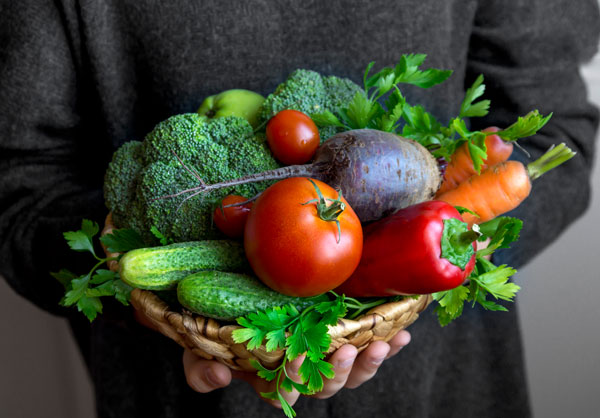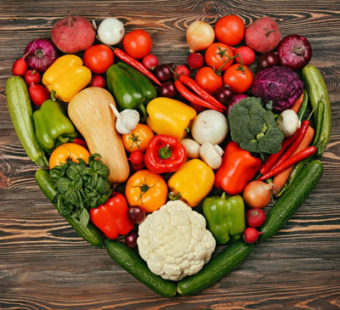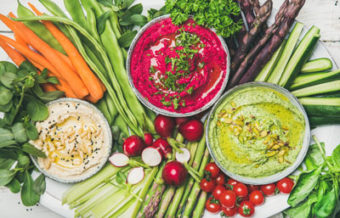Are you eating enough vegetables?
Posted: August 13, 2020 | By: Stacy Croninger

Spring, summer, and fall bring loads of fresh vegetables, which for many, means amazing meals, snacks, and more. Is it important to eat vegetables and what are the benefits? And what do you do if veggies aren’t something you enjoy? Research is always the best way to answer important questions like these so you know the facts. After looking at a few facts we’ll share ways to make the most of vegetables and share some options for those that don’t enjoy eating them.
Veggie Benefits
Did you know there are at least nine different vegetable and fruit families? And each offers a variety of benefits, which means you can mix and match what you eat. Across the board, there are several standard benefits. Harvard School of Public Health in their article “The Nutrition Source” identifies these benefits:
- Lower blood pressure
- Reduce the risk of heart disease and stroke
- Prevent some types of cancer
- Lower risk of eye and digestive problems
- Positive effect on blood sugar, which can help with weight
Their article goes into detail regarding each of these benefits so you have the data you need to make good vegetable choices.
Which Veggies?
While no one vegetable has everything you need, some rise to the top for their well-rounded offering. Medical News Today suggests the following vegetables are the healthiest, and they definitely have exceptional benefits.
- Spinach – not only is it low in calories, it is packed with vitamins like vitamin K, A, and C as well as magnesium, folate, iron, calcium, and antioxidants.
- Kale – this leafy green is also low in calories, but its real benefit is how it can benefit people with high cholesterol.
- Broccoli – a cruciferous veggie, it offers vitamin K and C (twice the recommended amount of C) as well as fiber.
- Peas – while they are a starchy vegetable, they provide fiber, protein, vitamins A, C, and K as well as some B vitamins. They are a great option for plant-based protein.
- Sweet Potatoes – these root vegetables contain more than your daily requirement of vitamin A, as well as vitamin C and B-6, and potassium. Plus, they have beta-carotene, which supports your eye health.
 Beets – their bright red color offers potassium and folate, as well as heart-healthy nitrates. You’ll also find the antioxidant alpha-lipoic acid, which might be helpful to diabetics.
Beets – their bright red color offers potassium and folate, as well as heart-healthy nitrates. You’ll also find the antioxidant alpha-lipoic acid, which might be helpful to diabetics.- Carrots – packed with vitamin A, in the form of beta-carotene, it helps support healthy eyesight.
- Fermented vegetables – look for sauerkraut and pickled vegetables, like cucumbers and carrots, to provide much needed probiotics.
- Tomatoes – technically, they are a fruit, but most of us add them to the vegetable list. They provide potassium and vitamin C as well as lycopene, which is a powerful antioxidant.
- Garlic – while you may not be eating it raw, it is in most of our cooking and is a great natural antibiotic.
- Onions – you’ll find vitamin C, B-6, and manganese as well as a sulfur compound that may help protect against cancer.
- Alfalfa sprouts – this low calorie vegetable has lots of vitamin K as well as saponins, flavonoids, and phytoestrogens.
- Bell peppers – offered in a variety of colors, they have vitamin C, B-6, folate, and beta-carotene. They also have antioxidants like capsanthin, quecetin, and lutein.
- Cauliflower – vitamin C and K, plus fiber are readily available in this veggie. It also has the antioxidant indole-3-carbinol.
- Seaweed – this sea vegetable is one of few plant-based sources for omega-3 fatty acids. It also is typically rich in iodine.
That’s quite the list, but the good news is, you don’t have to eat all of them as you can see there is overlap between them. And there are other vegetables not on this list that provide great benefits as well.
Eat Your Veggies
If you like vegetables, eating them is usually not an issue. If you don’t, here are a few tips from the USDA ChooseMyPlate site:
- Provide low-fat salad dressing or dips for dipping raw veggies like broccoli, bell peppers, or celery.
- Cut up veggies and store in a bowl or see-through container in the fridge so they are readily available.
- Add them to cooked dishes like chili, soup, casseroles, or muffins and quick breads.
- Try grilling or roasting vegetables – it changes the texture and flavor, which may make them more appealing
Youngevity has recipes that use Saveur Spices and Vinegars to enhance your vegetables. Try one of the recipes for a side dish or a vegetable focused meal. You can also make quick dips with using Saveur Spices for yummy dipping.
Or, if you just can’t do the real thing, try Youngevity Super Greens or Youngevity CardioBeets. Both work great in smoothies and drinks and include organic vegetables and fruits as well as vitamins and minerals your body needs.
Posted in:

